The Dell Venue 10 7040 Review
by Brandon Chester on June 30, 2015 8:00 AM ESTSystem Performance
The Venue 10, much like the Venue 8, is fairly unique among the Android devices that we have tested. While most Android smartphones and tablets employ ARM based SoCs, Dell has opted to use Intel's Atom Z3580 processor. We saw this SoC in the Venue 8, and more recently in the ASUS ZenFone 2. Z3580 is built on Intel's 22nm process, and sports four Silvermont cores with a max burst frequency of 2.33GHz. To test the performance of the Venue 10 we turn to our standard web based benchmarks, along with Basemark OS II, before moving onto benchmarks that focus on the GPU and NAND. For our 2015 benchmark suite we've added in the latest iteration of WebXPRT to our web browser tests.
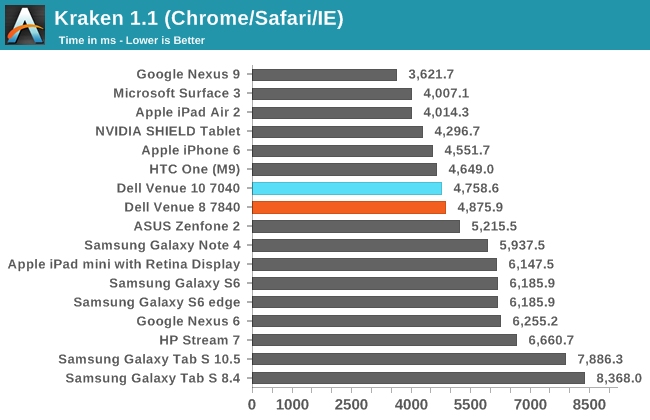
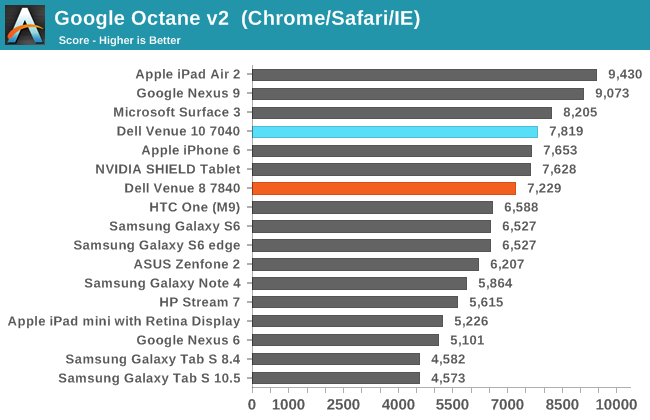

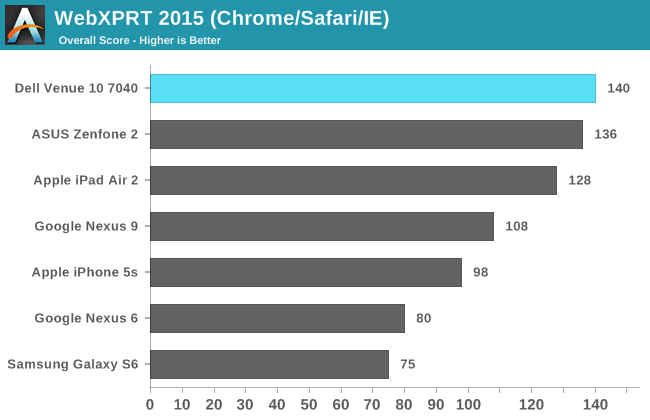
As usual, Intel's Z3580 SoC performs very well in all of our web browser benchmarks. However, it ends up trailing the iPad Air 2 and Nexus 9 in several cases, and when your tablet retails for $499 you really need to have top notch performance. The Venue 10 is launching later into Moorefield's lifetime than the Venue 8 did, and it doesn't offer it in an incredibly inexpensive package like the ASUS ZenFone 2. While the web performance is not bad by any means, it's not as impressive at this point in time and in a $499 device.
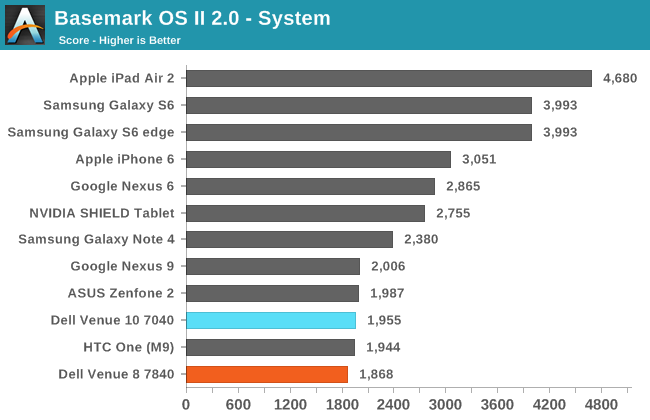

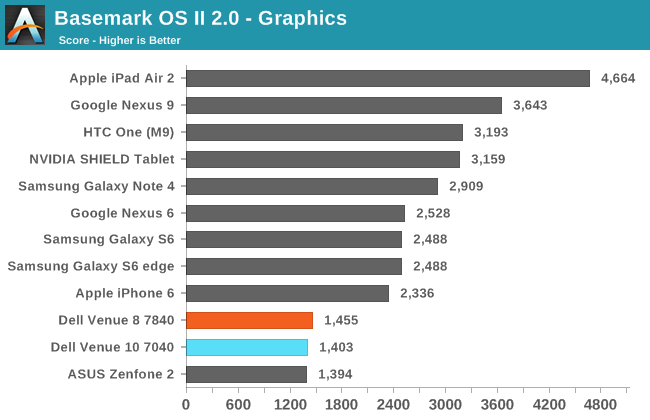
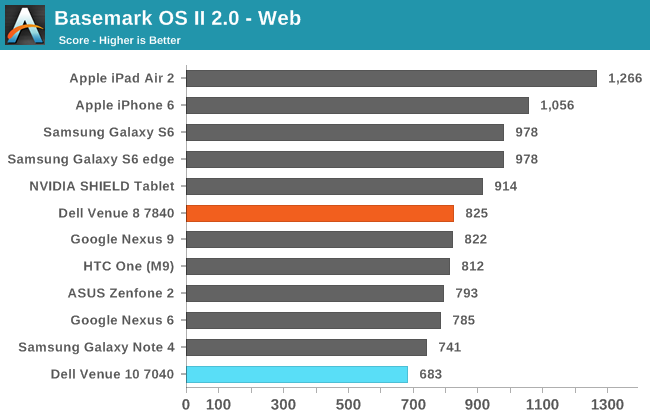
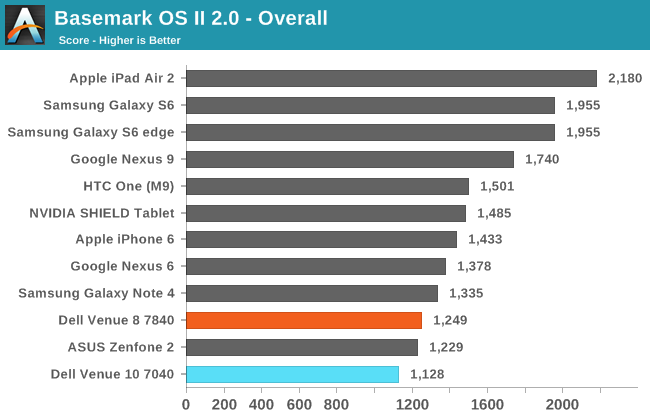
The performance in Basemark OS II is unfortunately not competitive with the other flagship tablets and smartphones on the market. The Venue 10 falls behind the Venue 8 in the NAND memory test, and regresses to varying degrees in every other test with the exception of the system test. Graphics performance is also very far behind Tegra K1 and Apple's A8X. This leads to an overall score that sits at the bottom of our list. While this was easier to let slide with more inexpensive devices like the ZenFone 2 and Venue 8, there's no way to get around the fact that the overall performance is just not as good as the Nexus 9 and iPad Air 2.
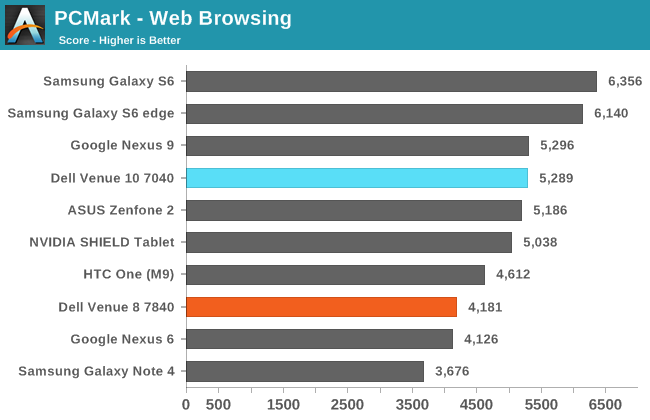
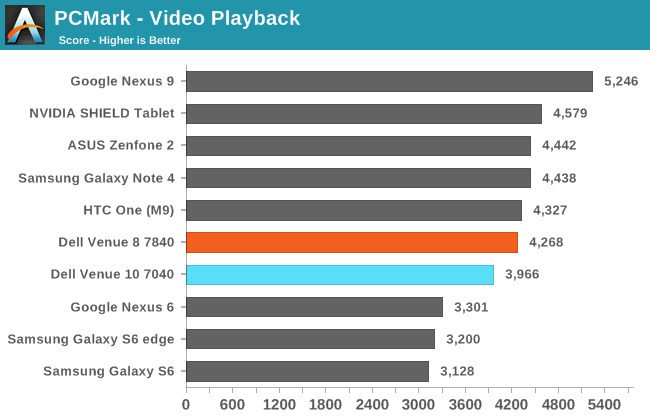
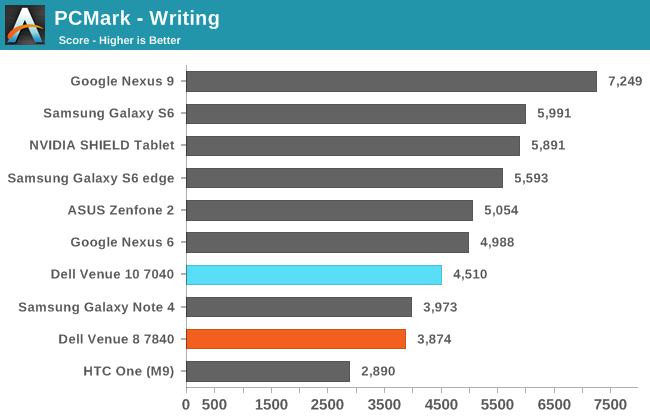
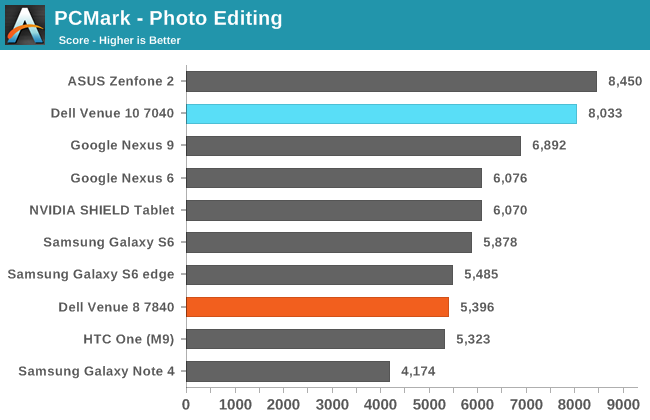
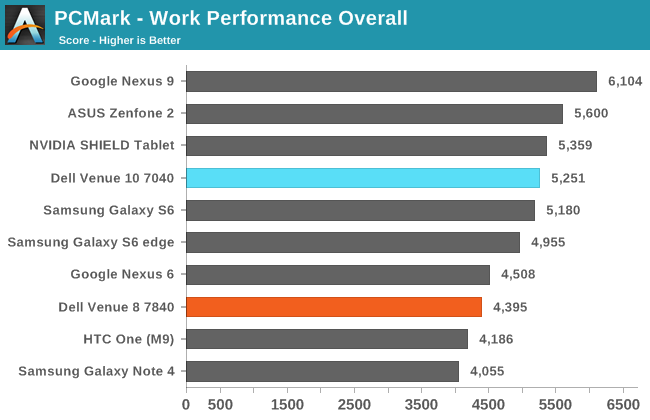
In PCMark we see improvement almost across the board from the Venue 8 on Android KitKat to the Venue 10 running Lollipop. These are most certainly software related improvements, as the Venue 10 shares the same SoC as the Venue 8 and neither device appears to handle throttling better than the other. The one exception is the Video Playback sub-test, which has the Venue 8 performing better than the Venue 10. I suspect that this is due to the sequential read performance of the Venue 10's NAND causing long seek times. In the grand scheme of things, the Venue 10 certainly performs better in PCMark than the Venue 8 did on KitKat, but it still sits behind the Nexus 9 by a significant margin.










49 Comments
View All Comments
banner - Tuesday, June 30, 2015 - link
Where is furyx review? What take u so long?milkod2001 - Wednesday, July 1, 2015 - link
It's pointless to bother now with Fury X review. It's been out everywhere already. You will not learn anything new anyway. Fury X is decent but nothing extremely impressive. 980 ti performs slightly better in most games. Both cards suck as single GPU solution for 4k. Wait for 14/16nm next year...Maybe this site guys could do Fury Nano Review as soon as possible to save reputation....
milkod2001 - Wednesday, July 1, 2015 - link
and yeah, this Atom $499 Android tablet is a joke. Anything with Atom should not cost more than $250-300 max. Give me $499 hybrid with W10, core M, 8GB RAM, 128GB SSD,12'' 1080p touch screen ,than we talk.Azune - Wednesday, July 1, 2015 - link
"This is made even more obvious by the fact that the barrel on the end is actually made of metal, and frequently has a lower surface temperature than the rest of the chassis."This is a common misconception. The surface temperature of a metal surface is exactly the same as the temperature of a plastic surface. It feels colder because metal is a very good heat conductor, draining the heat away from your body faster. So the right term would actually be: "feels colder" because the surface temperature is the same.
Veritasium has mode a video about this: https://youtu.be/vqDbMEdLiCs
Brandon Chester - Wednesday, July 1, 2015 - link
My wording was definitely not very good in a scientific sense so I've updated it. I've actually seen that Veritasium video before. Thanks for pointing that out though, it's always good to stay on the side of proper terminology.Azune - Thursday, July 2, 2015 - link
Great, the rest of the review was very good, but that sentence just stood out to me like a sore thumb.zodiacfml - Wednesday, July 1, 2015 - link
Whoa, I thought this is a 2 in 1 Windows 8.1 which looks great if this were a Windows device with a quad core Atom. The implementation is quite poor too, weaker than the Zenfone2.techguymaxc - Wednesday, July 1, 2015 - link
Why in the world would anyone but this for $499? Right now you can get an Asus Transformer Book T300 Chi for the exact same price from the Microsoft Store. http://www.microsoftstore.com/store/msusa/en_US/pd...asfletch - Friday, July 3, 2015 - link
T300 would be totally worth it at that price if it had 16:10 or 3:2 screen and better battery life (around 4-5 hours apparently). Oh well, it's still miles better than this Dell.Ubercake - Wednesday, July 1, 2015 - link
Very thorough review. I feel like I've tried it without even touching it. Nice job!